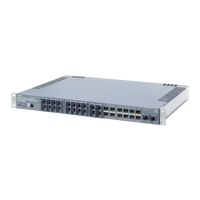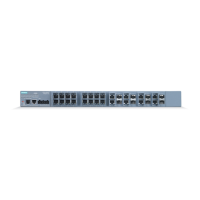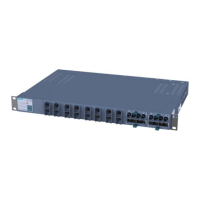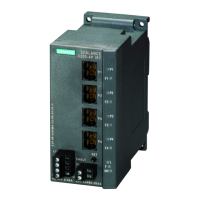Syntax
Call up the command with the following parameters:
ip nat service <inside local ip> [<inside local port number>]
{ auth | dns | ftp | pop3 | pptp | smtp | telnet | http | nntp
| snmp | other [<inside global port number>]}
[{ tcp | udp | any }] [<description>]
The parameters have the following meaning:
Parameter Description Range of values / note
inside local ip Actual address of the device that
should be reachable from external.
Enter a valid IPv4 address.
inside local port
number
Port that will be assigned to the in‐
side local address.
If you do not specify any ports, the port
that you assign for the inside
global port number parameter will
be entered.
Service Service for which the port transla‐
tion is valid.
● auth
● dns
● ftp
● pop3
● pptp
● smtp
● telnet
● http
● nntp
● snmp
● other
inside global
port number
Port that will be assigned to the in‐
side global address.
If you have selected the other service,
you can enter a port.
If you have selected another service, a
port will be specified.
Protocol Protocol for which the port transla‐
tion is valid.
● tcp
● udp
● any
description Description for the port translation -
Result
The static port translation with a service is configured.
Further notes
You delete a configuration with the no ip nat service command.
You configure static port translations for an interface with a port range with the ip nat
service portrange command.
You display the current configuration with the show ip nat service command.
Layer 3 functions
9.1 NAT
SCALANCE XB-200/XC-200/XF-200BA/XP-200/XR-300WG Command Line Interface
444 Configuration Manual, 07/2017, C79000-G8976-C361-06
